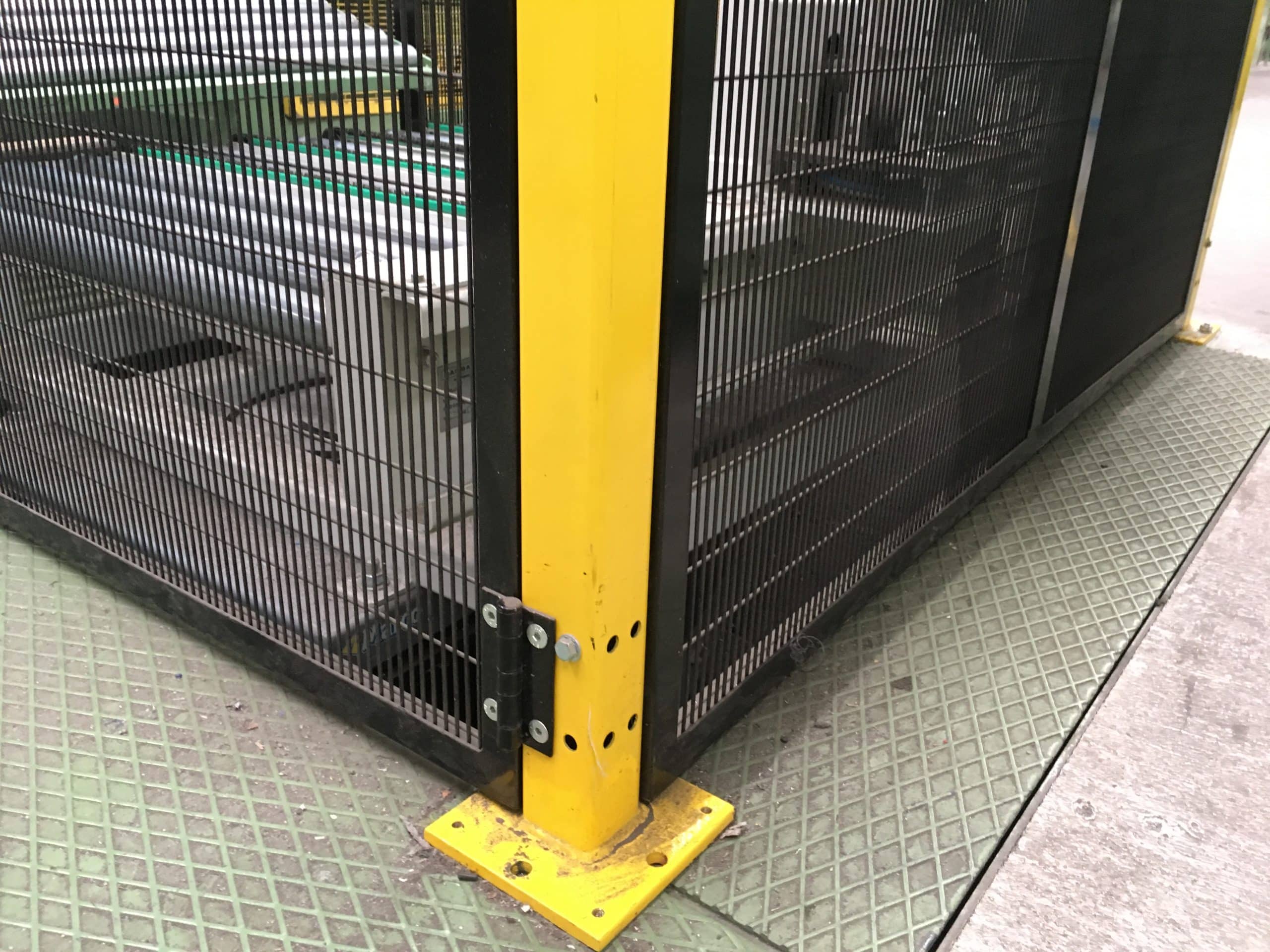Last edit: 26/07/2023

The design of the guard requires an analysis of the predictable aspects relating to the environment and the operation of the machine. An inadequate consideration can reduce the usability of the machine, inducing people to neutralize the guards provided, thus exposing them to dangerous situation.
The Standard considers the main aspects, relating to the machine, to be analyzed during the design and application phases of the guards.
5.1 Here are some points to consider during the design:
- Access to hazard zones [5.1.2];
- Containment of ejected parts and other impacts [5.1.3];
- Noise [5.1.5];
- Potentially explosive atmosphere [5.1.7];
The Standard considers the main aspects, relating to human aspects, to be analyzed during the design and application phases of the guards.
5.2 Here are some points to consider during the design:
- Safety distances [5.2.2];
- Control of access to the hazard zone [5.2.3];
- Viewing [5.2.4];
- Ergonomic aspects [5.2.5];
- Intended use [5.2.6].
The Standard considers the main aspects relating to the design and construction of the guard.
5.3 Here are some points to consider during the design and construction:
- Crushing or trapping points [5.3.2];
- Durability [5.3.3];
- Exlusion of contaminants [5.3.6];
- Sharp edge [5.3.7];
- Removal of fixed guards [5.3.9];
- Mounting of removale fixed guards [5.3.10];
- Movable guards [5.3.12];
- Closed position of movable guards [5.3.13];
- Interlocking guards with a start function [5.3.14].
The Standard considers the main aspects, regarding materials, rigidity and impact, to be analyzed during the design and construction phases of the guards.
5.4 Here are some points to consider during the design and construction:
- Impact amd ejection resistance [5.4.2];
- Rigidity [5.4.3];
- Secure fixing [5.4.4];
5.9 The Standard provides requirements to ensure full visibility of the machine through the guard.
5.18 The Standard provides requirements to reduce the likelihood of climbing on guards.
5.22 The Standard provides requirements on the colors of the guards.
5.19 Retained fastenings

The need for retained fastening is described in paragraph 5.19.
This requirement aims to reduce risks due to loss of one or more of the fastenings when guards are removed for various reasons. This can lead to the guards not being replaced, only partially fixed in place or fixed with replacement fixings that do not have adequate strength, so that the guard cannot adequately perform its protective function, for example, where containment of ejected parts is necessary.
This is the important language used:
[ISO 14120: 2015] 5.19 Retained fastenings
The requirement does not necessarily apply to fixed guards that are only liable to be removed, for example, when the machinery is completely overhauled, is subject to major repairs, or is dismantled for transfer to another site.
As stated, not all fastenings need to be retained. Let’s take for example a robot cell. The fixed guards will stay in place all the time and will be removed only when there is a major modification of the cell. In that case the fastening can be “normal”, meaning that the barriers can be opened only with the use of a tool.
The Machinery Directive has an Essential Health and Safety Requirement
[2006/42/EC] ANNEX I – 1.4.2.1. Fixed guards
Fixed guards must be fixed by systems that can be opened or removed only with tools.
Their fixing systems must remain attached to the guards or to the machinery when the guards are removed.
Where possible, guards must be incapable of remaining in place without their fixings.
That seems an imposition valid for all fixed guards, regardless of their usage. In reality that interpretation is not the correct one. Hereafter what it is stated in the official guide to the machinery directive:
The second indent of section 1.4.2.1 requires the fixing systems for fixed guards to remain attached to the guards or to the machinery when the guards are removed. […]Application of this requirement depends on the manufacturer's assessment of the risk concerned. […].
The requirement does not necessarily apply to fixed guards that are only liable to be removed, for example, when the machinery is completely overhauled, is subject to major repairs or is dismantled for transfer to another site. For the same reason, it may not be necessary to apply the requirement to the casings of machinery intended for use by consumers, where the manufacturer’s instructions specify that the repairs requiring removal of these casings are only to be carried out in a specialist repair workshop. In that case, fixing systems should be used that are not easy to remove.
It shouldn't be a surprise that ISO 14120 is in line with those guidelines. Again, the bottom line is that, in general, not all fastenings of fixed guards need to be retained.